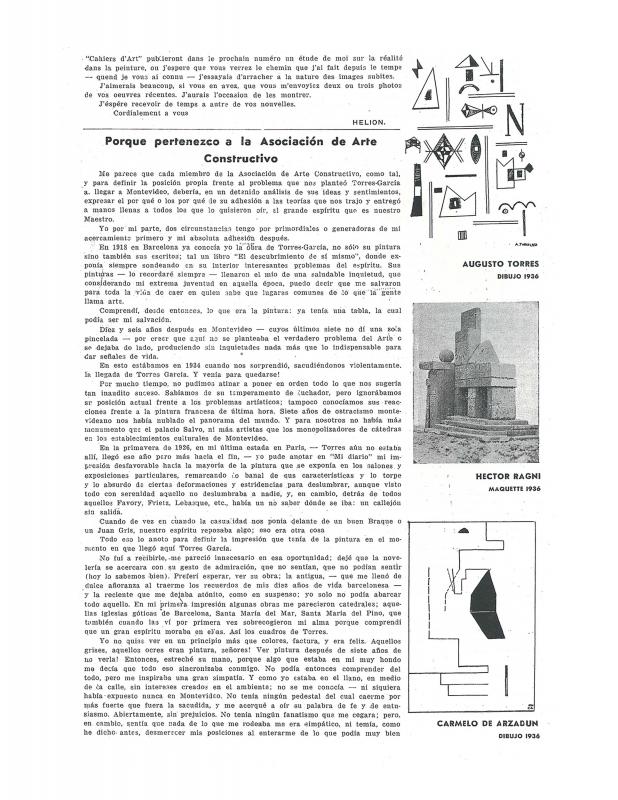In 1943 Joaquín Torres García (1874–1949) painted Pintura Constructiva 12 (oil on cardboard). It was published on page 3 of the most recent issue (December of that year) of the magazine Círculo y Cuadrado as an iconographic illustration for the article by Francisco Lanza Muñoz that appeared in the same issue (pages 3 to 7) that was essentially a review of Torres García’s painting. The author’s monologue—riddled with cryptic references and deliberately absurd reasoning that sought to “verbalize” the visual arts produced by the constructive movement—includes interesting attempts to describe the written expression of the symbol in the ideographic sense used by JTG, as well as an effort to use written language to shed light on a simplified meaning of the sign. It is a subtle perception that, in Torres García, there is “an attempt to establish the eternity of a work of art, not over the course of time, but in the exploration of a single instant captured in the present.” This approach is reminiscent of Heidegger who, in his meta-history of philosophy, seems to want to show that metaphysical tradition has always been dominated by an obsessive desire to identify and capture the present. JTG explored the metaphysical void between the eternal and the instantaneous or immediate in many of his texts; it was, in fact, a concern that profoundly influenced his aesthetic and philosophical doctrine. It should be noted that, in his lengthy article, Lanza Muñoz mentions the intersection between “the Apollonian” and “the Dionysian” in the constructive painting he is reviewing. He quotes Nietzsche (and Jung) to argue that this dualism is essential to the process of art. Lanza Muñoz also agrees with what JTG has frequently acknowledged regarding his tendency to swing back and forth like a pendulum from the classical (“the Apollonian”) to the romantic (“the Dionysian”), a dichotomous drift he appears to have yielded to until the end of his days. [As complementary reading see, in the ICAA digital archive, the following texts published in Cercle et Carré [Círculo y Cuadrado / Circle and Square]: by Joaquín Torres García “Aquí, en Montevideo” (doc. no. 1263116), “El arte naturalista y el arte geométrico” (doc. no. 1263101), “El plano en el que deseamos situarnos” (doc. no. 1263054), “La presente revista” (doc. no. 1262991), and “Reflexiones” (doc. no. 1263191); by Guido Castillo “El constructivismo. Muerte y nacimiento de un momento histórico” (doc. no. 1263176); by Alexis Carrel “El hombre, una incógnita” (doc. no. 1263085); by Edgar Varese “Nacionalismo y Folklore” (doc. no. 1263070); by Carmelo de Arzadun “Necesidad de agruparse para la formación de un medio artístico” (doc. no. 1263023); by San J. Luis Vicente “Nosotros y nuestro ambiente” (doc. no. 1263146); and by Héctor Ragni “Nuestro arte constructivo y las teorías cubistas” (doc. no. 1263131), and “Por qué pertenezco a la asociación de arte constructiva” (doc. no. 1263007)].












